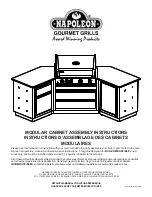
5
TECHNICAL DATA
Read the instruction manual completely and
carefully before using the power tool.
Protection category II power tool; double
insulated
In accordance with essential applicable safety
standards of European directives
Wear eye, ear and breath protection
Follow very carefully the instructions in this manual,
save it and keep it close at hand, ready to carry out any
inspection of parts that may be necessary.
If the tool is used with care and normal maintenance is
carried out, it will work well for a long time.
The functions and use of the tool you have
bought shall be only those described in this manual.
Any other use of the tool is strictly forbidden.
ILLUSTRATIONS
DESCRIPTION (See figures)
A “Drilling/Impact Drilling” selector switch(Fig.1, Fig.2)
C Drill chuck shaft gap (Fig.1, Fig.2 and Fig.3)
D Machine neck (Fig.1, Fig.2 and Fig.3)
E Supply cord (Fig.1 and Fig.2)
F Thumbwheel for speed preselection (Fig.1 and Fig.2)
G Gear selector (Fig.1 and Fig.2)
H Auxiliary grip (Fig.1 and Fig.2)
I Rotational direction switch (Fig.1 and Fig.2)
J On-/off switch (Fig.1 and Fig.2)
K Retainer button (Fig.1 and Fig.2)
L Key type drill chuck (Fig.1 , Fig.2 and Fig.3)
M Drill chuck key (Fig.1 , Fig.2 and Fig.3)
N Depth gauge (Fig.1 and Fig.2)
EQUIPMENT
- Auxiliary handle
- Depth gauge
- Drill chuck key
- Operating instructions with Safety instructions
- Warranty
BRIEF DESCRIPTION
The machine is intended for impact drilling in brick,
concrete and stone as well as for drilling in wood, metal
and plastic. Machines with electronic control and right/
left rotation are also suitable for screwdriving and thread-
cutting.
Additional drill characteristics
- The rotational direction switch
I
is used to reverse the
rotational direction of the machine. However, this is not
possible with the On/Off switch
J
actuated.
- Electronic control of spindle speed, infinitely variable
by finger pressure on the On/off switch
J
.
- The electronic regulation built-in the switch trigger
F
allows to adjust the speed suitable for the material to be
worked.
- For continuous operation the On-/Off switch can be
locked in the “On” position by the button
K
.
BEFORE USING THIS TOOL
WARNING!
Before carrying out any work, check, for
instance, using a metal detector, that there are no electric
wires or gas or water pipes under the surfaces you wish to
work on.
Make sure the mains voltage is correct: it must be
the same as that on the specification label. Machines with
230V can also be connected to a 220V mains supply.
To turn the machine on, press the ON/OFF switch J
and keep it pressed down.
When the ON/OFF switch is released, the machine
stops.
WARNING!
Always disconnect the plug from the
socket before doing any work on the machine.
1. Changing the Tool (fig.3).
WARNING!
Before any work on the machine itself,
pull the mains plug.
WARNING!
Wear protective gloves when changing
the tool. The drill chuck can become very hot during longer
work periods.
Open the key type drill chuck
L
by turning until the tool
can be inserted. Insert the tool. Insert the chuck key
M
into
the corresponding holes of the key type drill chuck
L
and
clamp the tool uniformly.
2. Mains connection
WARNING!
Connect only to a single-phase AC
current supply and only to the mains voltage specified
on the rating plate. Connection to sockets without earth
protection is possible as the appliance features protective
class II insulation according to European Standard EN
60745. Radio interference suppression complies with the
European Standard EN 60745.
3. Auxiliary handle
WARNING!
Operate your machine only with the
auxiliary handle.
- Unscrew the auxiliary handle
H
in an anticlockwise
direction.
- Turn the auxiliary handle
H
to the required position.
- Screw the auxiliary handle
H
in place again.
4. Setting the depth gauge
Drill
DI13/820GE2 DI16/1000GE2 DI16/1050GE2
Rated voltage
V~
230
230
230
Frequency
Hz
50-60
50-60
50-60
Rated power
W
810
1010
1050
No load speed
rpm
0-830/0-2000
0-830/0-2000
0-830/0-2000
Max. steel capacity
mm
13
16
16
Chuck clamping range
mm
1.5-13
1.5-13
1-13
Weight according EPTA-Procedure 01/2003
kg
2.77
2.95
3.0
Summary of Contents for DI13/820GE2
Page 2: ...2 Fig Abb 2 DI13 820GE2 DI16 1050GE2 DI16 1000GE2 Fig Abb 1 Fig Abb 3...
Page 28: ...28 1 b 2 b d f 3 b d f g 4 b...
Page 29: ...29 d f g h i 5...
Page 34: ...34...
Page 35: ...35...






































